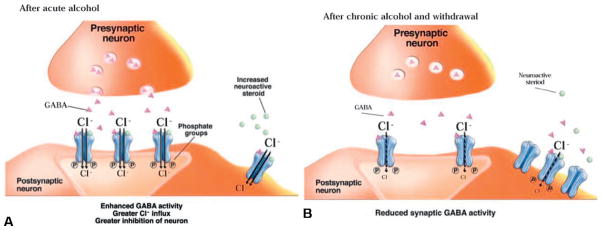Fig. 6.5. The γ-aminobutyric acid (GABA) system and the effects of acute (A) and chronic (B) alcohol exposure.

(A) GABA acts in part through the activation of GABA(A) receptors, which are ligand-gated ion channels that allow chloride ions (Cl−) to flow into the neuron after GABA binds to it. Greater influx of Cl− into the neuron makes it more difficult for the cell to generate a new action potential (i.e., nerve impulse). This is why GABA is considered to be an inhibitory neurotransmitter. The molecular actions by which alcohol may exert its effects on GABAergic activity is by directly binding to the receptor, increasing presynaptic release of GABA, or releasing GABAergic steroids that activate extrasynaptic receptors (Clapp et al., 2008).
(B) After chronic alcohol exposure and during withdrawal, GABA activity at the synapse is reduced, leading to reduced inhibition of the postsynaptic neuron. This results in development of anxiety and hyperexcitability. (Adapted from Clapp et al., 2008.)
